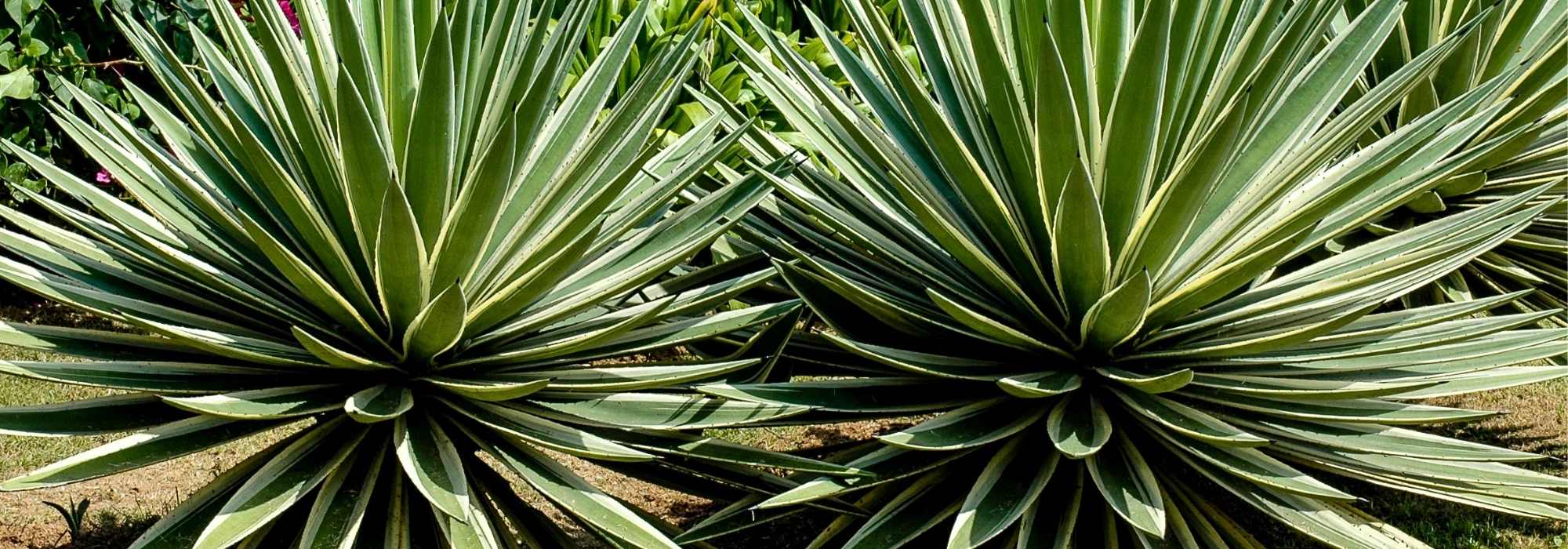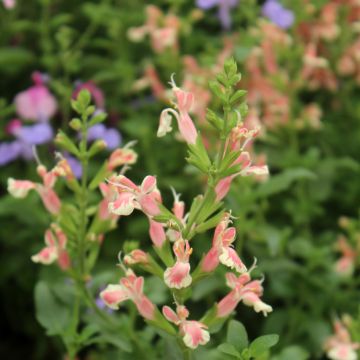

Agave Kikijokan


Agave Kikijokan


Agave parryi Truncata - Agave de Parry


Agave parryi Truncata - Agave de Parry


Agave parryi Truncata - Agave de Parry


Agave parryi Truncata - Agave de Parry
View more pictures
Hide images

Samantha F.

Samantha F. • 29 FR
Agave Kichijokan
Agave Kikijokan
Very beautiful young plant that has adapted well to our oceanic climate: it grows and flourishes every year. Finally, an easy plant that has not required any care or watering.
Samantha, 23/08/2022
Special offer!
Receive a €20 voucher for any order over €90 (excluding delivery costs, credit notes, and plastic-free options)!
1- Add your favorite plants to your cart.
2- Once you have reached €90, confirm your order (you can even choose the delivery date!).
3- As soon as your order is shipped, you will receive an email containing your voucher code, valid for 3 months (90 days).
Your voucher is unique and can only be used once, for any order with a minimum value of €20, excluding delivery costs.
Can be combined with other current offers, non-divisible and non-refundable.
Home or relay delivery (depending on size and destination)
Schedule delivery date,
and select date in basket
This plant carries a 12 months recovery warranty
More information
We guarantee the quality of our plants for a full growing cycle, and will replace at our expense any plant that fails to recover under normal climatic and planting conditions.

Would this plant suit my garden?
Set up your Plantfit profile →
Description
Agave Kichijokan is one of the most decorative and sought-after forms of Parry's Agave. Discovered in 1982 in a small botanical station in Mexico, it resembles a large artichoke or a bluish-grey ball from a distance, due to its broad and short leaves, ending in a large reddish twisted spine. The truncata variety is a plant for succulent plant enthusiasts, whose cultivation in open ground is reserved for mild climates. However, its modest size allows it to be grown in pots in sheltered locations from cold and humidity elsewhere.
Originating from a small region located in the heart of Mexico, it is part of those agaves recently discovered in nature and multiplied in cultivation by enthusiasts always looking for exotic plants capable of surviving our cold and humid winters. Due to its rarity, it seems to be a form directly derived from Agave parryi. This slow-growing species is adapted to semi-desert climates, which are very hot in summer, and mild and more humid in winter. It belongs to the Asparagaceae family (formerly Agavaceae), just like yuccas. This perennial succulent herbaceous plant has rhizomes capable of producing suckers, but it is almost devoid of above-ground stems. It consists of a few broad leaves, showing a widely rounded top. The black to reddish-black terminal spine is often twisted, and looks as though it has been glued to the end of the leaf. The leaf blades are imbricate like slates on a roof, forming a rosette 40cm (16in) high and 60cm (24n) wide at maturity. Smooth, rigid and very thick, light bluish-grey in colour, the leaves are bordered by spines. When a rosette is mature, after many years, it produces a flowering stalk reaching 1 to 1.25m (3 to 4ft) in height. Horizontally branched, it bears flat and spherical panicles composed of multiple small yellow-green flowers. The semelparous rosette dies after flowering, which lasts several months. One of the characteristics of this form is that it produces few peripheral rosettes to ensure its perpetuity.
In mild climates, this collectible agave will find its place in a large rockery or at the edges of a dry garden, where its remarkable silhouette will stand out admirably in a minimalist decor with some wild grasses like Stipa ichu or Stipa gigantea. It can be planted with the Barbary Fig, giant fennel, and quite hardy candle cacti (Cleistocactus strausii, Cylindropuntia imbricata), which all equally undemanding plants. This agave can also be cultivated in a pot on a terrace, among a collection of cacti, by carefully choosing the sunniest spot, protected from winter rains, to recreate a decor inspired by gardens and patios that flourish at the end of the world.
Agave is an edible plant, used in Mexico to make mescal, an alcoholic beverage obtained by fermenting its juice rich in sugars. It is also used in traditional medicine in Mexico, Brazil, and India, and has proven antifungal properties. Very attractive to bees and nectar-seeking insects, the inflorescences attract many pollinators.
Agave Kichijokan in pictures




Flowering
Foliage
Plant habit
Botanical data
Agave
Kikijokan
Agavaceae
North America
Other Agave
View all →Planting and care
Position it in full sun. Plant it in poor, rocky, limestone, or sandy, well-draining soil. It does not tolerate winter humidity and cold, but can withstand dry cold in dry soil. Protect it from humidity in regions with rainy and cold winters by using a temporary waterproof shelter that allows light to pass through, such as a transparent plastic tarp. If this installation is not aesthetically pleasing, it has the merit of saving the life of this rare plant. As it prefers dry soils in summer, you can consider planting it in a 50cm (20in) hole filled with a mixture of rocks and light soil. Ensure its collar is kept free from stagnant water. The drier the soil, the more resistant it will be to frost, up to about -12°C (10.4°F).
As the plant has rather modest growth, it can be cultivated in a pot (preferably terracotta) on a terrace or balcony, in a light substrate such as cactus soil, with particular attention to drainage. Regularly water in summer, but let the substrate dry between 2 waterings. It will then be easy to store the pot away from heavy frosts and humidity, in a bright, well-ventilated, minimally heated room. Reduce or even stop watering in winter. The plant can spend April to October outdoors.
Be sure to wear protective gloves when handling this plant.
Planting period
Intended location
Care
Planting & care advice
-
, onOrder confirmed
Reply from on Promesse de fleurs
Similar products
Haven't found what you were looking for?
Hardiness is the lowest winter temperature a plant can endure without suffering serious damage or even dying. However, hardiness is affected by location (a sheltered area, such as a patio), protection (winter cover) and soil type (hardiness is improved by well-drained soil).

Photo Sharing Terms & Conditions
In order to encourage gardeners to interact and share their experiences, Promesse de fleurs offers various media enabling content to be uploaded onto its Site - in particular via the ‘Photo sharing’ module.
The User agrees to refrain from:
- Posting any content that is illegal, prejudicial, insulting, racist, inciteful to hatred, revisionist, contrary to public decency, that infringes on privacy or on the privacy rights of third parties, in particular the publicity rights of persons and goods, intellectual property rights, or the right to privacy.
- Submitting content on behalf of a third party;
- Impersonate the identity of a third party and/or publish any personal information about a third party;
In general, the User undertakes to refrain from any unethical behaviour.
All Content (in particular text, comments, files, images, photos, videos, creative works, etc.), which may be subject to property or intellectual property rights, image or other private rights, shall remain the property of the User, subject to the limited rights granted by the terms of the licence granted by Promesse de fleurs as stated below. Users are at liberty to publish or not to publish such Content on the Site, notably via the ‘Photo Sharing’ facility, and accept that this Content shall be made public and freely accessible, notably on the Internet.
Users further acknowledge, undertake to have ,and guarantee that they hold all necessary rights and permissions to publish such material on the Site, in particular with regard to the legislation in force pertaining to any privacy, property, intellectual property, image, or contractual rights, or rights of any other nature. By publishing such Content on the Site, Users acknowledge accepting full liability as publishers of the Content within the meaning of the law, and grant Promesse de fleurs, free of charge, an inclusive, worldwide licence for the said Content for the entire duration of its publication, including all reproduction, representation, up/downloading, displaying, performing, transmission, and storage rights.
Users also grant permission for their name to be linked to the Content and accept that this link may not always be made available.
By engaging in posting material, Users consent to their Content becoming automatically accessible on the Internet, in particular on other sites and/or blogs and/or web pages of the Promesse de fleurs site, including in particular social pages and the Promesse de fleurs catalogue.
Users may secure the removal of entrusted content free of charge by issuing a simple request via our contact form.
The flowering period indicated on our website applies to countries and regions located in USDA zone 8 (France, the United Kingdom, Ireland, the Netherlands, etc.)
It will vary according to where you live:
- In zones 9 to 10 (Italy, Spain, Greece, etc.), flowering will occur about 2 to 4 weeks earlier.
- In zones 6 to 7 (Germany, Poland, Slovenia, and lower mountainous regions), flowering will be delayed by 2 to 3 weeks.
- In zone 5 (Central Europe, Scandinavia), blooming will be delayed by 3 to 5 weeks.
In temperate climates, pruning of spring-flowering shrubs (forsythia, spireas, etc.) should be done just after flowering.
Pruning of summer-flowering shrubs (Indian Lilac, Perovskia, etc.) can be done in winter or spring.
In cold regions as well as with frost-sensitive plants, avoid pruning too early when severe frosts may still occur.
The planting period indicated on our website applies to countries and regions located in USDA zone 8 (France, United Kingdom, Ireland, Netherlands).
It will vary according to where you live:
- In Mediterranean zones (Marseille, Madrid, Milan, etc.), autumn and winter are the best planting periods.
- In continental zones (Strasbourg, Munich, Vienna, etc.), delay planting by 2 to 3 weeks in spring and bring it forward by 2 to 4 weeks in autumn.
- In mountainous regions (the Alps, Pyrenees, Carpathians, etc.), it is best to plant in late spring (May-June) or late summer (August-September).
The harvesting period indicated on our website applies to countries and regions in USDA zone 8 (France, England, Ireland, the Netherlands).
In colder areas (Scandinavia, Poland, Austria...) fruit and vegetable harvests are likely to be delayed by 3-4 weeks.
In warmer areas (Italy, Spain, Greece, etc.), harvesting will probably take place earlier, depending on weather conditions.
The sowing periods indicated on our website apply to countries and regions within USDA Zone 8 (France, UK, Ireland, Netherlands).
In colder areas (Scandinavia, Poland, Austria...), delay any outdoor sowing by 3-4 weeks, or sow under glass.
In warmer climes (Italy, Spain, Greece, etc.), bring outdoor sowing forward by a few weeks.




























































